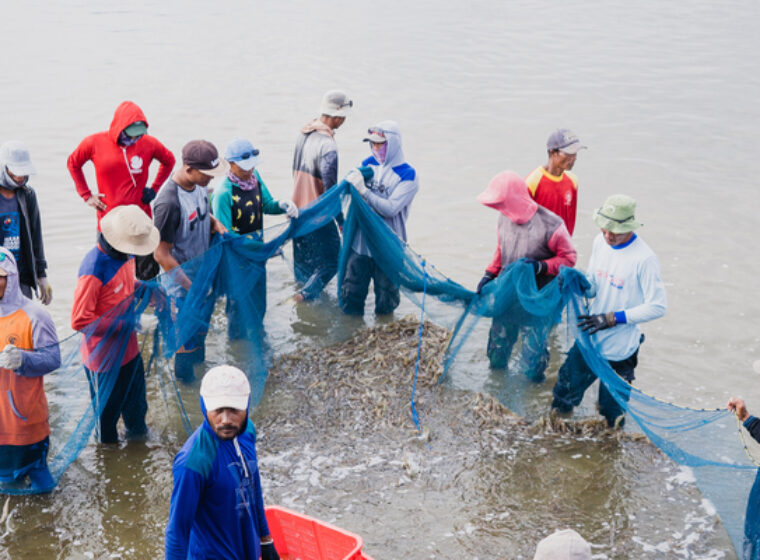Challenges in vannamei shrimp farming can be faced by anyone, whether they are seasoned farmers who have been in the field for a long time or just venturing into the vannamei shrimp farming business.
Three main challenges often encountered in vannamei shrimp farming are climate change, fluctuating pond water conditions, and disease outbreaks. Each of these challenges can affect productivity and the sustainability of farming. Furthermore, if not properly addressed, they can lead to economic losses for farmers. Let’s discuss them further in this article.
Also Read: 11 Types of Shrimp Diseases that Often Occur During Cultivation
Challenges in Vannamei Shrimp Farming
1. Climate Change
Climate change has become a serious threat to vannamei shrimp farming. Changes in seawater temperature and unstable weather conditions can disrupt the shrimp’s life cycle and increase the risk of long-term stress on the shrimp, which can impact pond productivity.
Moreover, climate change can also lead to extreme weather events such as tropical storms and floods, disturbing the pond water balance and damaging infrastructure. To address this, farmers need to adopt shrimp farming practices that are more resilient to climate change.
2. Fluctuating Pond Water Conditions
Fluctuating pond water conditions, including changes in water quality parameters, are the most common challenges faced by vannamei shrimp farmers. Poor water quality can cause stress to the shrimp and increase the risk of disease outbreaks.
To address the issue of fluctuating pond conditions, farmers can monitor water quality parameters regularly and take necessary actions when anomalies or changes occur in each water quality parameter.
Also Read:
3. Disease Outbreaks
The most serious challenge in vannamei shrimp farming is disease outbreaks. Disease outbreaks can lead to significant financial losses for farmers.
Some common diseases affecting vannamei shrimp farms include White Spot Syndrome Virus (WSSV), IHHNV, EMS, EHP, and Vibriosis. These diseases can spread rapidly and cause mass mortality if not promptly addressed.
To reduce the risk of disease outbreaks, farmers need to implement good vannamei shrimp farming management practices, such as daily water quality monitoring, routine health checks on shrimp, biosecurity measures, and high-quality feed.
Also Read: Nutritional Needs of Vannamei Shrimp for Optimal Growth
Vannamei Shrimp Farming is More Productive with DELOS!
Various challenges in vannamei shrimp farming often arise during the farming process, ranging from water issues to infrastructure problems and disease outbreaks. If not properly addressed, these challenges can result in economic losses for farmers.
However, you don’t have to worry because DELOS is here to help you manage your shrimp ponds, including preventing and addressing various issues that may arise during farming.
To connect with the DELOS team, you can contact us via email at contact@delosaqua.com or visit www.delosaqua.com. Vannamei shrimp farming is more productive with DELOS!




